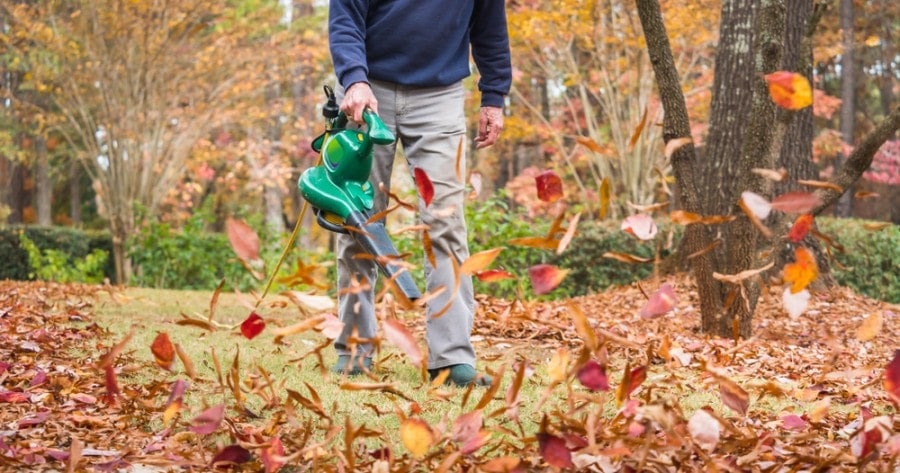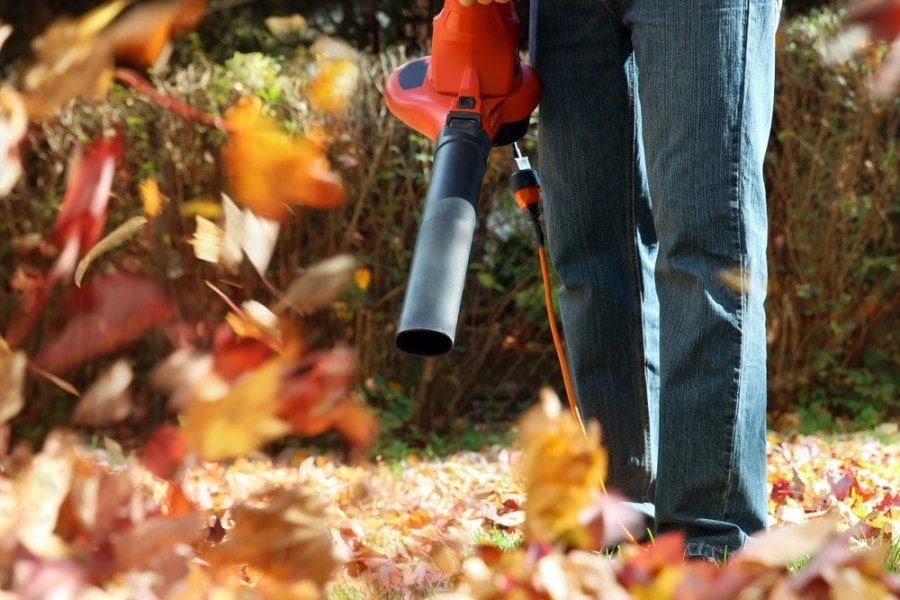Who Invented the Leaf Blower, & When? (History)
-

- Last updated:

Leaf blowers are essential in every garden shed, especially when fall rolls around the corner. Once the leaves begin falling, everyone could benefit from this handy tool to help them deal with the mess in the yard. While the practicality and importance of leaf blowers are already widely recognized, you must be wondering who exactly is the genius behind the idea of a leaf blower.
In the article below, we will discuss the inventor of these valuable machines and when exactly they were invented.
How Does a Leaf Blower Work?
All leaf blowers work with the use of centrifugal forces. These forces are generated from the center towards the edge of the spinning object. On the inside of the leaf blower is a fan with spinning blades, also called the impeller. As these blades are spinning, they are sucking air through the vent in the back and forcing it down a funnel. This narrow funnel pushes the air inside it, causing it to speed up to a certain optimal speed. Once this air is expelled to the outside at high speed, it gains enough power to blow your leaves.
Types of Leaf Blowers

There are many different types of leaf blowers, depending on your particular needs and the needs of your household. Below you can find the three different types of leaf blowers, divided by their form and the way they are used.
- Handheld Leaf Blower: The most popular option among homeowners, being excellent for residential areas, especially for small projects such as cleaning and maintaining your garden.
- Backpack Leaf Blower: These leaf blowers are very easy to use and maneuver, especially because you hold the tube in your hand while the motor is held on a shoulder harness. These leaf blowers are perfect, durable, and long-lasting, often more powerful than handheld options.
- Walk Behind Leaf Blower: Walk-behind blowers resemble snow blowers in the way you use them by pushing them. While these leaf blowers are the most powerful, they tend to be a handful to store and maintain properly.
The History of Leaf Blowers
The Invention of Leaf Blowers – 1947
Two important sides contributed to the invention of the leaf blower—the Kyoritsu Noki Japanese-based company and a Dutch-American Aldo Vandermolen. The precise answer for who invented the leaf blower remains unknown, although most sources give their credit to Kyoritsu Noki.
The Precursor to the Modern Leaf Blower – The 1950s and 1960s
The first invention of the leaf blower was called a gas-powered backpack crop duster at first. These machines were designed to work as blowers, misters, and sprayers, often being used for spraying pesticides in plant nurseries. It was in the form of a handheld leaf blower, although inventors were actively working on thinking up a design similar to today’s walk-behind blower. The first walk-behind blower was invented in 1959 and usually came with a vacuum component too.
Gaining Popularity – The 1970s and 1980s
In 1970, Kyoritsu Noki released the first backpack power blower, and in 1977 the first handheld power blower. These machines were now specialized for one action only: blowing leaves. Throughout the 1980s, leaf blowers skyrocketed in popularity since people across America wanted a machine that made garden work easier while believing it to be eco-friendly. Millions of leaf blowers were sold in the United States each year, as most homeowners chose this alternative option before any other.
Improved Design – The 1990s
Manufacturers focused their work on implementing a better and more efficient design for leaf blowers. In 1975, some US states banned the use of leaf blowers due to the environmental impact caused by gas emissions. In the mid-1990s, manufacturers redesigned leaf blowers to lower noise emissions drastically. This improvement was a huge step toward creating an ideal machine that will simultaneously be practical and safe.
Modern-Day Leaf Blowers – 2000s to 2020s
Once the leaf blowers started switching to electric and battery-powered machines, the game changed significantly. While electric leaf blowers didn’t provide as enough power as gas-powered ones, many homeowners would choose them gladly. Once manufacturers introduced battery-powered machines, including leaf blowers, many homeowners and gardeners were amazed at the affordability and practicality. They reduced the noise to almost nothing, and the machine was much cheaper than gas-powered or electric models.
The Future of Leaf Blowers
While battery-powered leaf blowers are a decent replacement and alternative to gas-powered ones, they still lack running time before needing to be recharged. Manufacturers are working on creating a battery strong enough to keep a leaf blower working for 6 or more hours. These leaf blowers will be perfect for both residential and commercial use.
Final Thoughts
Inventors had to go a long way before reaching the perfect eco-friendly design we know and love today. If you were wondering about the interesting history of leaf blowers and how manufacturers and scientists came to achieve their unique designs, this article hopefully provided you with all the answers. What started as a pesticide sprayer is today a handy machine that no garden lover can live without.
Featured Image Credit: The Toidi, Shutterstock
Contents


